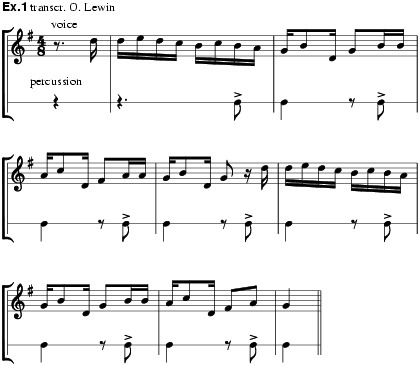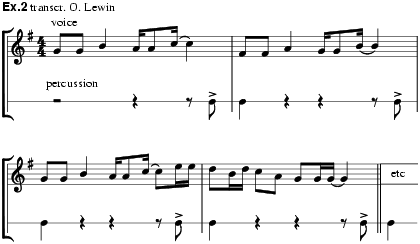
An indigenous Jamaican folk form in which music, words and movement are closely linked. Mento (Old Sp. mentar: ‘to mention’) is sung in the Jamaican vernacular, and covers a wide range of subjects expressed in humorous satirical style. When the songs are used to ridicule or censure, personal references are veiled in symbols to avoid undue embarrassment or offence.
Mento is similar to the Afro-Cuban rumba but sung at a slower tempo (ex.1). It is characterized by strong accents on the last beat of the four-beat bar; accents sometimes occur not in the melody but in the supporting percussion rhythms, clapping and stamping (ex.2). Mento involves group participation, usually with a soloist improvising and leading vocally or instrumentally.


Mento is accompanied by ensembles of four to ten instrumentalists playing various combinations of flute, fiddle, harmonica, penny whistle, accordion, clarinets and trumpets (sometimes home-made) for the melody; guitars, banjos, bass fiddles (with one, three or four strings) and rumba boxes for the harmony; and drums, sticks, maracas, triangle, tambourine, jawbone of a horse or ass (used as a rattle) and grater stroked with a nail or other metal object (percussion).
Mento is danced either independently or as the fifth figure of Jamaican quadrille sets; the hips move circularly in a horizontal plane while the feet cover a small area in backwards, sideways and turning steps. Mento music depends largely on the virtuosity and improvisatory skill of musicians, many of whom have had no formal training. Unlike calypso it has never enjoyed great commercial popularity, but the political independence of Jamaica (1962) created renewed interest in the genre.
OLIVE LEWIN